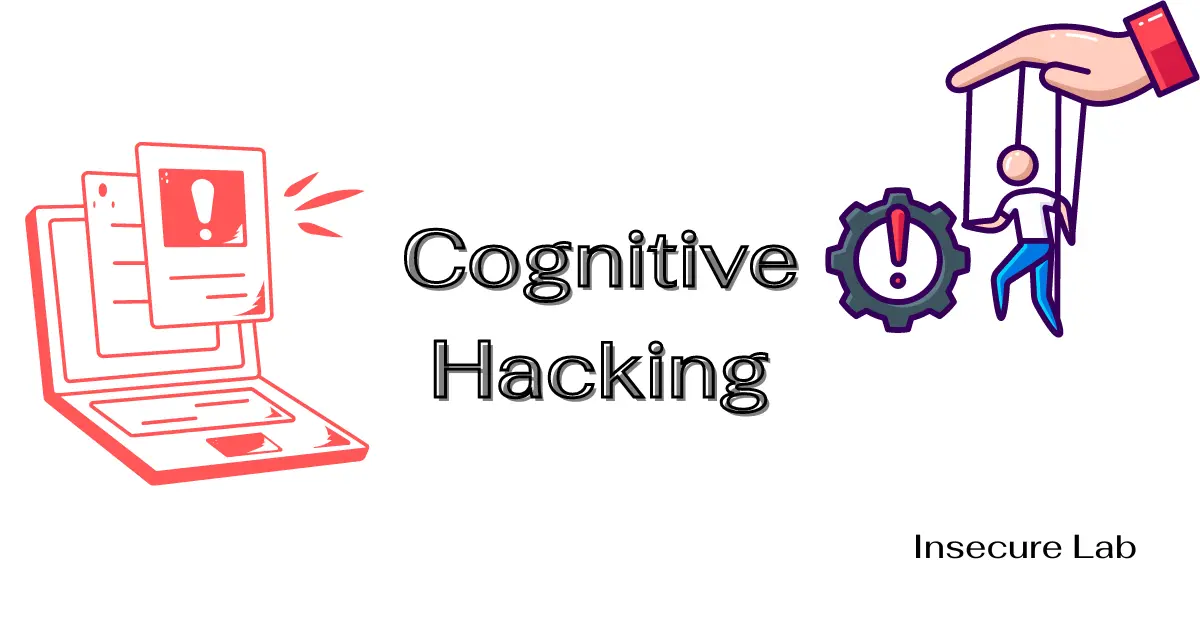🔍 Search
📥 Subscribe
Cognitive Hacking

Table of Contents
Learn about cognitive hacking, a form of cyberattack that targets human psychology. Find out their techniques and ways to prevent them in cyber security.
What is Cognitive Hacking?
Cognitive hacking is a type of cyber attack that aims to manipulate the perceptions and decision-making processes of individuals or groups. Unlike traditional cyber attacks that target computer systems and networks, cognitive hacking targets human cognition. The goal is to influence beliefs, sway opinions, or alter behavior through the dissemination of misleading or false information.
Techniques of Cognitive Hacking
Cognitive hacking involves a variety of attacks, each with its own strategies and objectives. Here are some of the most common techniques:
1. Disinformation Campaigns
The deliberate dissemination of false information to deceive or mislead people. Examples include fake news and deepfake videos.
2. Misinformation Campaigns
The spread of incorrect or misleading information without malicious intent. This can happen through social media or other communication channels.
3. Psychological Operations (PsyOps)
Tactics used to psychologically manipulate target audiences, often employed by state actors to influence political outcomes or public sentiment.
4. Social Engineering
The manipulation of individuals into divulging confidential information or performing actions that may not be in their best interest.
5. Spear Phishing
Highly targeted phishing attacks designed to manipulate specific individuals into providing sensitive information.
Examples of Cognitive Hacking
1. Political Manipulation
- Election Interference: Spreading disinformation to influence election outcomes.
- Propaganda: Using biased or misleading information to promote a political cause or viewpoint.
2. Corporate Espionage
- Brand Sabotage: Spreading false information to damage a company's reputation.
- Market Manipulation: Influencing stock prices through the spread of rumors or false information.
3. Personal Attacks
- Cyberbullying: Using digital communication to harass, threaten, or intimidate individuals.
- Identity Theft: Manipulating individuals into revealing personal information for fraudulent purposes.
Prevention and Mitigation
Mitigating cognitive hacking requires a multi-faceted approach that includes education, technology, and policy measures.
- Implement resilience training programs to improve cognitive defenses against psychological operations.
- Develop and deploy AI-based tools to detect and counter deepfakes, fake news, and other forms of disinformation.
- Collaborate with fact-checking organizations to verify the credibility of news and social media content.
- Enact laws and regulations to combat the spread of disinformation and hold perpetrators accountable.
- Implement advanced email filtering and anti-phishing solutions to detect and block phishing attempts.
- Always verify the source and credibility of information before acting on it.
Summary
Cognitive hacking can have serious consequences, including the erosion of trust in institutions, polarization of societies, and manipulation of democratic processes. It exploits cognitive biases and emotional responses, making it a powerful tool for those looking to exert influence or cause disruption without physical intervention.
